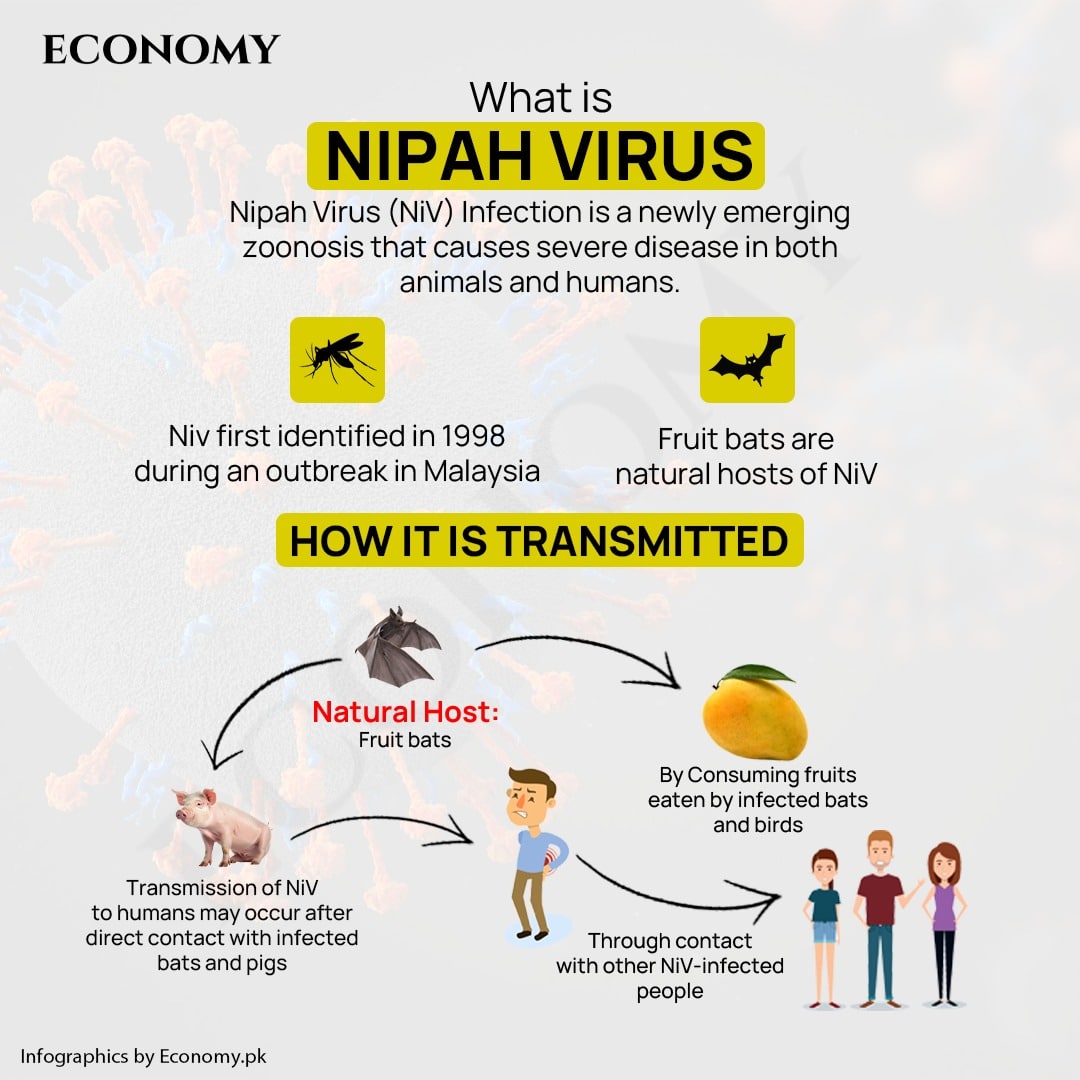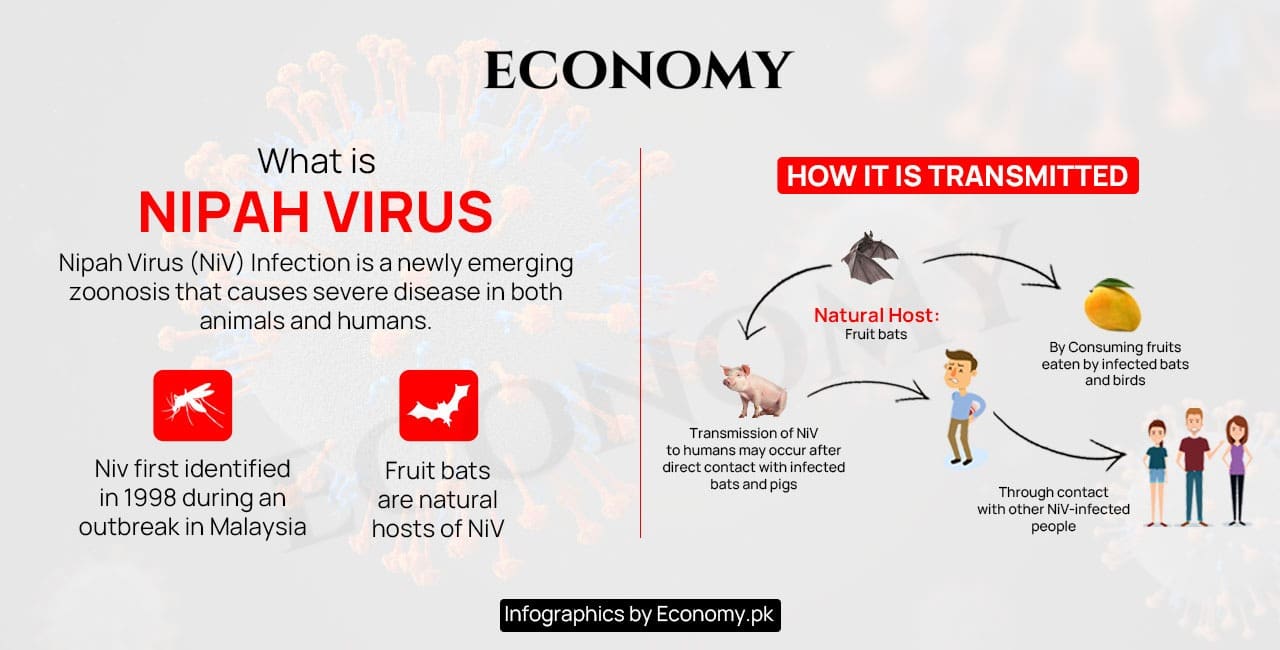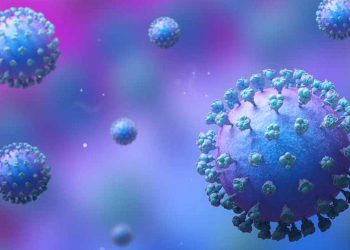Nipah virus (NiV) is a zoonotic virus, meaning it can be transmitted between animals and humans. In its natural habitat, fruit bats, often referred to as flying foxes, serve as the reservoir for NiV. This virus is also known to infect both pigs and humans. NiV infections are typically linked to encephalitis, which is characterized by brain swelling and can result in mild to severe illness, including fatalities. These outbreaks tend to occur nearly every year in specific regions of Asia, with Bangladesh and India being the primary affected areas.
To prevent Nipah virus infection, individuals should avoid contact with sick pigs and bats in regions where the virus is prevalent. Additionally, consuming raw date palm sap, which may be contaminated by an infected bat, should be avoided. During an outbreak, adhering to standard infection control practices in hospital settings can be crucial in preventing person-to-person transmission.

Diagnosis
Nipah virus (NiV) infection can be identified both during the illness and after recovery using various diagnostic tests. In the early stages of the illness, laboratory testing can be performed by utilizing real-time polymerase chain reaction (RT-PCR) on samples taken from throat and nasal swabs, cerebrospinal fluid, urine, and blood. As the illness progresses and even after recovery, antibody testing can be conducted using an enzyme-linked immunosorbent assay (ELISA).
Detecting NiV infection early can be challenging due to the nonspecific nature of initial symptoms. Nevertheless, early detection and diagnosis are of utmost importance. They not only improve the chances of survival for the infected individuals but also help prevent further transmission to others and enable effective management of outbreak response efforts.
NiV should be considered as a potential diagnosis for individuals exhibiting symptoms consistent with NiV infection, especially if they have been in regions where Nipah is more prevalent, such as Bangladesh or India, and particularly if they have had known exposure to the virus.
How it Transmitted
Nipah virus (NiV) can be transmitted to humans through:
- Direct contact with infected animals, such as bats or pigs, or their bodily fluids (like blood, urine, or saliva).
- Consumption of food products that have been contaminated by the bodily fluids of infected animals (such as palm sap or fruit tainted by an infected bat).
- Close contact with an individual who has contracted NiV or their bodily fluids, including exposure to nasal or respiratory droplets, urine, or blood.
Signs and symptoms
Infection with Nipah virus (NiV) has the potential to lead to a wide spectrum of diseases, ranging from mild to severe, including the development of brain swelling, known as encephalitis, and in some cases, it can be fatal.
Symptoms typically manifest within 4-14 days after exposure to the virus. The initial phase of the illness usually involves a period of 3-14 days characterized by fever and headache. Additionally, individuals may experience respiratory symptoms, such as cough, sore throat, and breathing difficulties. Subsequently, a phase of encephalitis, marked by symptoms like drowsiness, disorientation, and mental confusion, may ensue. This phase can progress rapidly, leading to a coma within 24-48 hours.
The initial symptoms of Nipah virus (NiV) infection can encompass one or more of the following:
- Fever
- Headache
- Cough
- Sore throat
- Breathing difficulties
- Vomiting
In more severe cases, individuals may experience:
- Disorientation, drowsiness, or confusion
- Seizures
- Coma
- Brain swelling (encephalitis)
Tragically, Nipah virus infection can lead to death in a significant percentage of cases, ranging from 40% to 75%. Survivors of NiV infection have reported long-term side effects, including persistent convulsions and alterations in personality.
In some instances, NiV infections can remain dormant or latent, leading to symptoms and, at times, death occurring much later after the initial exposure. These delayed infections have been documented months and even years following the initial exposure to the virus.
Precautions for Nipah virus
In regions where Nipah virus (NiV) outbreaks have been reported, such as Bangladesh, Malaysia, India, Singapore, and in different areas of Pakistan, individuals should take the following precautions:
- Maintain regular handwashing with soap and water as a hygiene practice.
- Steer clear of contact with sick bats or pigs.
- Avoid areas known to be frequented by bats.
- Refrain from consuming or drinking products that might have been contaminated by bats, including raw date palm sap, unwashed fruits, or fruits found on the ground.
- Exercise caution and avoid contact with the blood or bodily fluids of any person known to be infected with NiV.
Given that NiV can be transmitted from person to person, it is crucial to implement standard infection control practices and adhere to proper barrier nursing techniques in healthcare settings where a patient is confirmed or suspected to have NiV infection. These measures are essential to prevent hospital-acquired infections, also known as nosocomial transmission.






